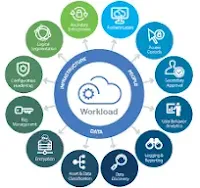Introduction
In Digital age, cybersecurity threats
are more prevalent than ever. With cybercriminals constantly evolving their
tactics, businesses must prioritize cybersecurity training to protect their
data, assets, and employees. When employees are well-trained in cybersecurity
best practices, they become the first line of defense against potential cyber
threats. This guide explores how cybersecurity training empowers employees and
strengthens an organization's security posture.
1. Enhancing Awareness of Cyber Threats
One of the most significant benefits of
cybersecurity training is raising awareness about potential threats. Employees
learn about various types of cyberattacks, including:
- Phishing
scams
– Recognizing fake emails and fraudulent links
- Malware
and ransomware
– Understanding how malicious software spreads
- Social
engineering
– Identifying manipulation tactics used by cybercriminals
By educating employees about these threats,
businesses can significantly reduce the likelihood of successful attacks.
2. Improving Incident Response and Risk Mitigation
Cybersecurity training ensures
employees know how to react when they encounter potential threats. This
includes:
- Reporting
suspicious emails or activities immediately
- Following
security protocols to contain threats
- Preventing
the spread of malware by avoiding unsafe practices
A well-informed workforce can help
mitigate risks before they escalate into major security incidents.
3. Reducing Human Error and Strengthening Security Practices
Human error is one of the leading
causes of security breaches. Employees who lack cybersecurity knowledge may
unintentionally expose company data. Training helps instill security best
practices, such as:
- Creating
strong, unique passwords
- Using
multi-factor authentication (MFA)
- Avoiding
the use of unsecured public Wi-Fi networks
By reducing human errors, businesses
can minimize vulnerabilities and enhance their overall security.
4. Protecting Sensitive Data and Ensuring Compliance
Companies handle vast amounts of
sensitive data, including customer information, financial records, and
proprietary business data. Cybersecurity training teaches employees how to:
- Safeguard
sensitive information from unauthorized access
- Follow
data protection regulations (e.g., GDPR, HIPAA, CCPA)
- Properly
store and dispose of confidential documents
Compliance with security standards not
only protects the organization but also helps build trust with customers and
stakeholders.
5. Building a Culture of Cybersecurity Awareness
Organizations that prioritize
cybersecurity training foster a security-first culture where employees take
proactive measures to protect company assets. This culture includes:
- Encouraging
employees to report security concerns without fear of repercussions
- Conducting
regular cybersecurity awareness sessions
- Promoting
accountability for safe digital practices
A strong cybersecurity culture ensures
that employees remain vigilant and continuously apply their knowledge in
everyday tasks.
6. Minimizing Financial and Reputational Risks
Cyberattacks can be costly, leading to
financial losses, data breaches, and reputational damage. Investing in
cybersecurity training can:
- Reduce
the risk of costly breaches and legal penalties
- Protect
customer trust and brand reputation
- Prevent
downtime caused by security incidents
By empowering employees with the right
skills, businesses can safeguard their financial stability and reputation in
the long run.
7. Keeping Up with Evolving Cyber Threats
Cyber threats are constantly evolving,
requiring businesses to stay ahead of the latest security trends. Ongoing
cybersecurity training helps employees:
- Stay
updated on emerging threats and defense strategies
- Adapt
to new security technologies and tools
- Continuously
improve their cybersecurity knowledge and skills
Regular training ensures that
organizations remain resilient against ever-changing cyber risks.
Conclusion
Cybersecurity training is no longer
optional—it’s essential for businesses of all sizes. By educating employees
about cyber threats, best practices, and incident response, organizations can
create a robust security framework that protects against cyberattacks.
Empowered employees play a crucial role in strengthening a company’s defenses,
ensuring a safer digital environment for everyone.
Investing in cybersecurity training
today means a more secure and resilient organization tomorrow. Is your business
ready to empower its employees with the right cybersecurity knowledge?







